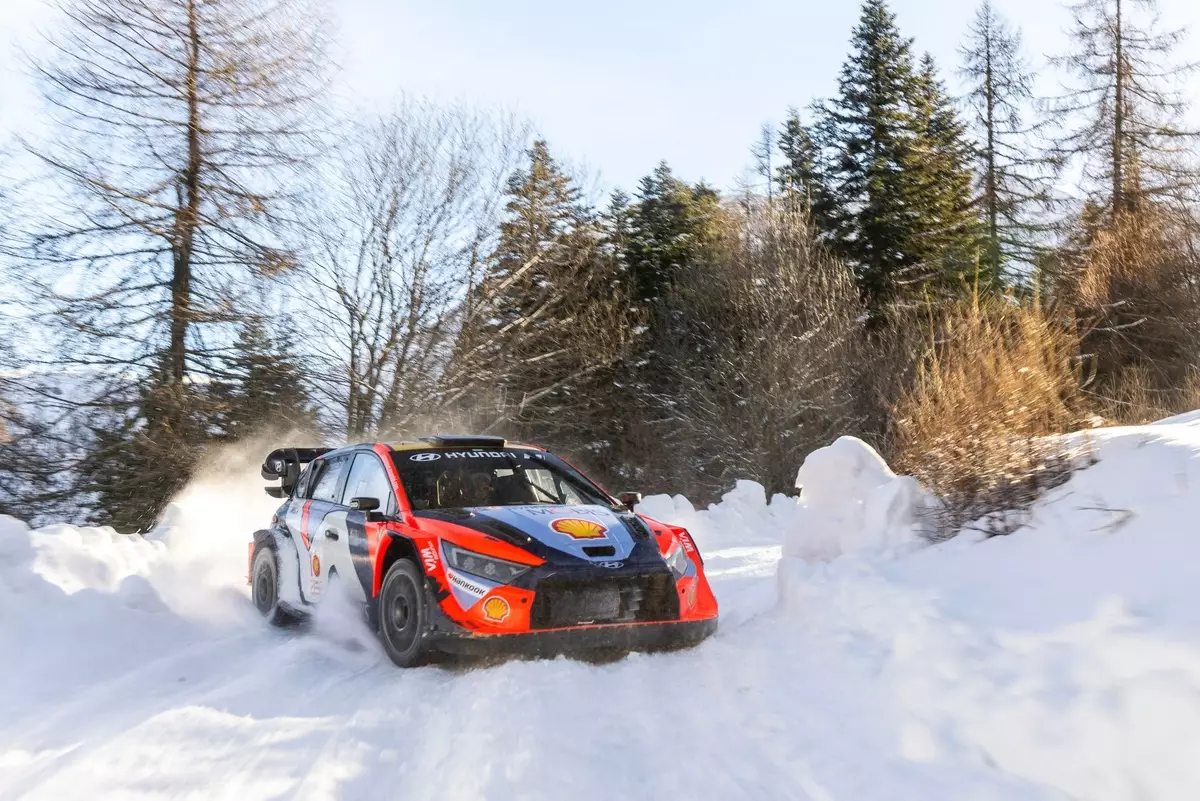The World Rally Championship (WRC) is entering an exciting new phase in 2025, as the FIA announces a significant overhaul to the technical regulations. One of the most notable changes concerns the removal of hybrid power units from the Rally1 cars, a decision that has provoked diverse reactions from competitors and fans alike. The transition is not merely about mechanical modifications; it embodies a philosophical shift towards simplicity in rallying, a move that has rekindled enthusiasm among drivers, including Hyundai Motorsport’s own Ott Tänak.
The decision to eliminate hybrid systems from WRC cars does more than strip away complexity; it alters the fundamental nature of driving a rally car. Under the previous configuration, the hybrid system added approximately 130 horsepower, allowing for an exhilarating burst of speed that made races more unpredictable. However, with the new rules in place, drivers will experience a reduction in power coupled with a marked decrease in weight—specifically around 87 kilograms. This change positions the 2025 Rally1 cars to be significantly lighter and more agile, ultimately affecting how they handle on diverse rally terrains.
According to Tänak, this newfound simplicity allows for a more intuitive driving experience. He emphasizes the joy of returning to a basic rally car format, one that lacks the complications once associated with hybrid systems. As a former world champion, he believes that the vehicle dynamics are now more closely aligned with the traditional essence of rallying, where skillful navigation and driving finesse supersede reliance on electronic aids. This perspective is vital as it hints at a more organic form of racing, reviving the thrilling fundamentals of the sport that some long-time fans may feel have been overshadowed in recent years.
Alongside the engine modifications, the introduction of a new control tyre from Hankook introduces another layer of challenge and excitement heading to the inaugural event in Monte Carlo. Drivers have been diligently testing the non-hybrid versions of their vehicles since last season, focusing on fine-tuning their setups for the new regulations while also gathering data on the Hankook tyres’ performance.
Tänak acknowledges some uncertainties regarding the performance of these new tyres but remains optimistic about his preparation for the upcoming season. His confidence appears to stem from an overall growth in familiarity with both the car and the team, something that had previously been difficult given the constant change of machinery and teams in past seasons. He highlights the importance of compatibility between driver and vehicle, asserting that feeling at ease in the car is paramount when facing the demanding courses typical of rallying.
Rally enthusiasts know that the sport’s essence lies in challenging environments and the skill required to navigate them. Speaking about the upcoming Monte Carlo rally, Tänak casually refers to the event as a competition he has often enjoyed in the past. The hectic pace and strategic intricacies of hybrid systems sometimes detracted from the raw enjoyment of racing, with drivers needing to precisely calculate power deployment in real-time.
The talk around the WRC is increasingly turning to the return of rallying’s core elements—control, intuition, and adaptation. As cars become simpler, the role of the driver will be amplified, shifting the balance of competition back to human skill rather than solely technological reliance. This is an enticing prospect for fans who appreciate the historical aspects of rallying and for drivers who relish the return to a more direct connection with their vehicles.
The 2025 season presents a multifaceted shift that could redefine what it means to compete in the WRC. While various unknowns linger around performance and adaptation to the new Hankook tyres, the overwhelming sentiment among drivers like Tänak suggests a positive outlook. Far from signaling a decline in excitement or competitiveness, the removal of hybrid power seems poised to enhance the overall rally experience, placing emphasis back on the thrill of the drive.
As viewers gear up for this new chapter, the excitement surrounding the upcoming Monte Carlo event serves as a reminder of how innovation—whether through simplification or advanced technology—can forge new paths while nurturing the rich tradition of rally racing. The 2025 season not only marks an evolution in vehicle design but reignites passion for the sport’s core tenets, promising an exhilarating year ahead for competitors and fans alike.

